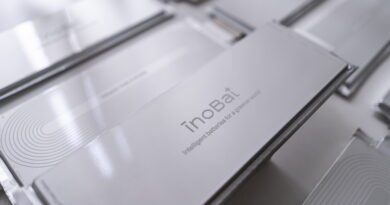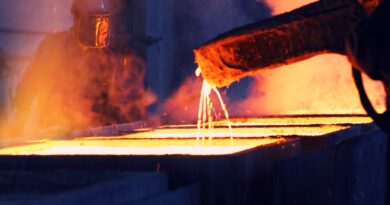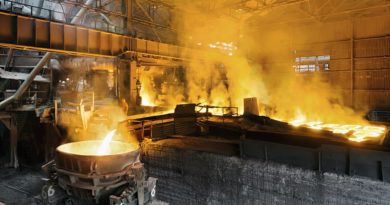Rio Tinto to build new tellurium plant at Kennecott mine
SALT LAKE CITY – Rio Tinto will begin construction on a new plant that will recover tellurium, a critical mineral used in solar panels, from copper refining at its Kennecott mine near Salt Lake City, Utah.
Rio Tinto is investing $2.9 million to set up the plant, which will recover tellurium as a byproduct of copper smelting, extracting a valuable mineral from waste streams. The plant will have a capacity to produce approximately 20 tonnes of tellurium per year.
Rio Tinto expects to begin production of tellurium in the fourth quarter of 2021, creating a new North American supply chain for this critical mineral.
Tellurium is an essential component of cadmium telluride, a semiconductor used to manufacture thin film photovoltaic (PV) solar panels. Thin films made of this compound can efficiently convert sunlight into electricity. Tellurium can also be used as an additive to steel and copper to improve machinability, making these metals easier to cut. It can also be added to lead to increase resistance to sulfuric acid, vibration and fatigue.
Rio Tinto Kennecott managing director Gaby Poirier said “The minerals and metals we produce are essential to accelerate the transition to renewable energy. Adding tellurium to our product portfolio provides customers in North America with a secure and reliable source of tellurium produced at the highest environmental and labour standards with renewable energy. Rio Tinto is committed to using innovation to reduce waste in our production process and extract as much value as possible from the material that we mine and process.”
Utah Governor Spencer Cox said “With abundant natural resources, Utah is ideally positioned to help supply the critical minerals essential to maintain American manufacturing competitiveness. Rio Tinto’s smelter at Kennecott is one of only two that is capable of producing copper and other critical minerals. The new tellurium plant is another valuable contribution to critical mineral independence and energy security in the U.S.”
Along with producing almost 20 per cent of U.S. copper, Kennecott’s smelting process also recovers gold, silver, lead carbonate, platinum, palladium and selenium, while molybdenum is recovered from the Copperton concentrator. In total, nine products are currently recovered from the ore extracted at Kennecott.
Rio Tinto is a partner with the U.S. Department of Energy’s Critical Materials Institute (CMI) and works closely with CMI experts to discover further ways to economically recover critical mineral byproducts such as rhenium, tellurium and lithium. The company is also investing in new facilities to extract battery grade lithium from waste rock at its Boron, California mine site and high quality scandium oxide from waste streams at its metallurgical complex in Sorel-Tracy, Quebec.
Notes to editors
As part of its commitment to a more sustainable future, Kennecott decided in 2019 to permanently shut its coal power plant and purchase renewable energy certificates, reducing the annual carbon footprint associated with its operation by as much as 65 per cent.
In 2020, Kennecott also became the first producer to be awarded the Copper Mark, the copper industry’s new independently assessed responsible production programme, demonstrating it meets over 30 criteria for responsible environmental, social and governance practices.
Recovering tellurium, an essential material for renewable energy production, reinforces Kennecott’s position as a supplier of choice of low carbon and responsible products to its customers and end-users.




